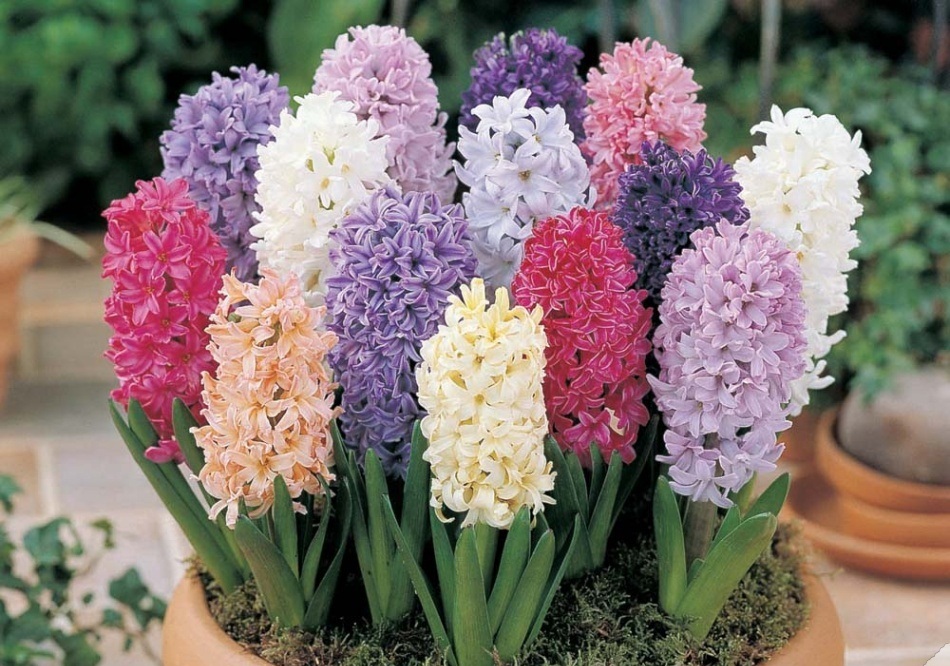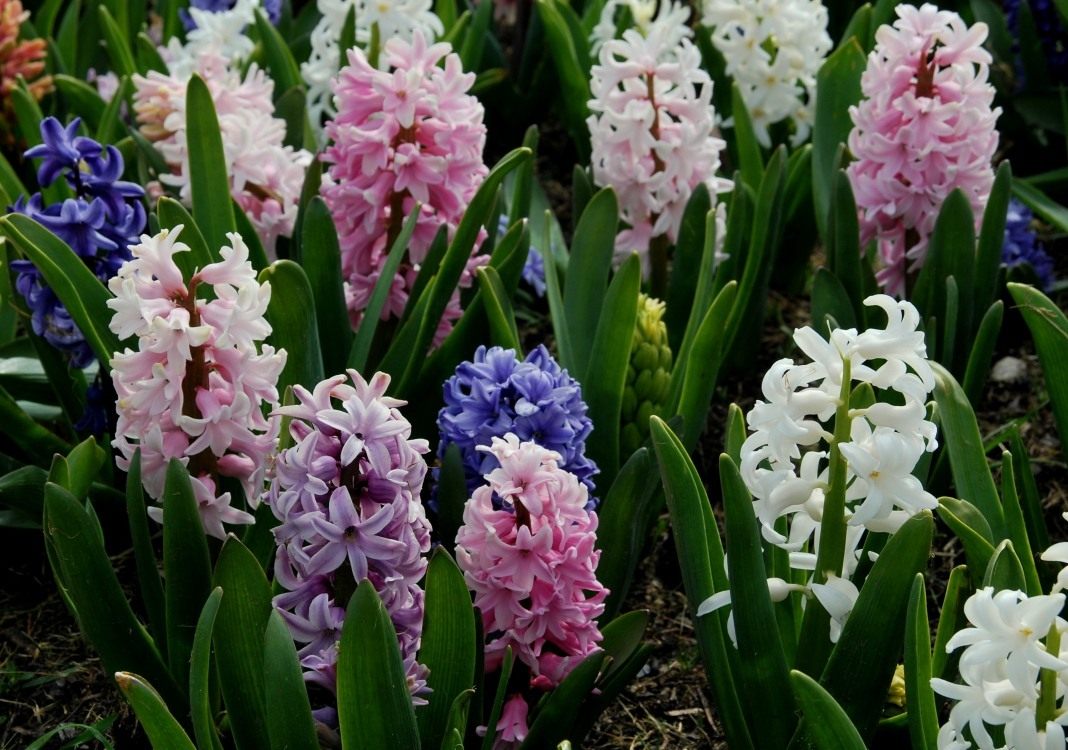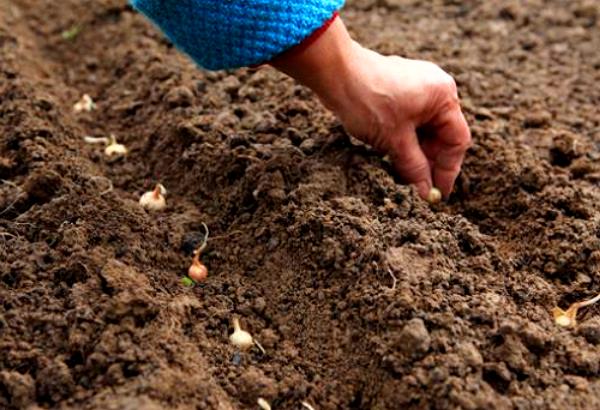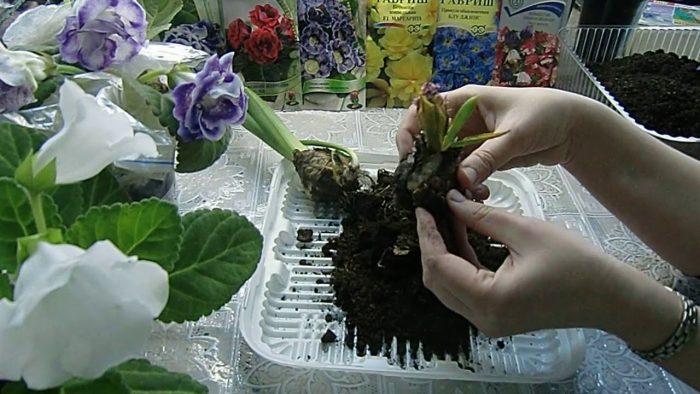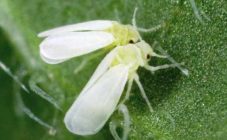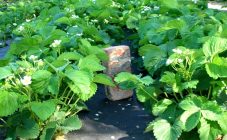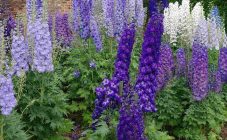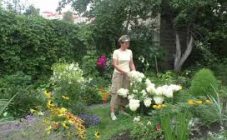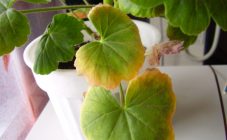Content:
One of the most beautiful bulbous flowers is hyacinth. An ornamental plant will beautify any garden or home. A perennial is usually grown in summer cottages, but you can also find it on window sills. However, the flower is quite capricious. To properly care for him, you need to know some wisdom. For example, what to do with hyacinth after flowering and how to properly transplant hyacinth.
Bloom
Hyacinths bloom in early spring. Depending on the region, they release inflorescences as soon as the snow cover melts. Hyacinth, when in bloom, exudes a strong, pleasant aroma. Large clusters in the form of spikelets with many flowers, resembling lilacs and bells, have different colors. The earliest plants are cornflower blue. After 8-14 days, it is worth waiting for pink flowers. A week later, snow-white and scarlet hyacinths appear. Further, purple plants come into bloom. Late varieties are those perennials whose color is sunny.
Homemade hyacinths can bloom at any time of the year. This period depends on the rooting time. It usually takes a plant about 70-90 days to release a bud. If you need to get inflorescences in winter, then the bulb is rooted in a pot in the fall.
Why does hyacinth not bloom
It happens that hyacinth does not bloom in any way. This happens for several reasons:
- If during the dormant period the bulb was in a room where it is too warm.
- If the soil is acidic, poor. The plant feels good only in light soil saturated with humus, sand, compost. The acidity should be neutral.
- Flowers are in waterlogged soil. Hyacinths love drained soil. Do not plant them in a place where groundwater accumulates.
- Insufficient water also negatively affects flower development.
- Plants love sunlight and do not tolerate drafts. Therefore, the place chosen for them is quiet, but sunny.
What to do after flowering
If hyacinths have faded, what to do next in the open field? In order for the culture to delight gardeners with selective, healthy flowers, it should be handled correctly. After flowering, it is recommended to wait for the leaves to dry and dig the bulbs out of the ground. They are stored for a while. The necessary manipulations are performed with them. After the onions are planted again in open ground, in order to bloom in early spring. It is best to transplant them to a new location. But before digging up, the summer resident must provide the plant with the necessary care.
Hyacinth care after flowering
After winter, there is enough moisture in the soil for hyacinths to thrive, but they still need to be watered during flowering. This is done once every 4-6 days. The ground under the stalks is mulched. After flowering is over, watering cannot be abruptly stopped. It should be continued, gradually reducing the frequency of procedures. 40-60 days after flowering, the gardener stops watering the plant. Usually at this time the leaves turn yellow.In central Russia, hyacinths begin to dry out in June. This is the best time to dig up the bulbs.
After flowering, the flower is fed. It is recommended to use complex fertilizers containing potassium, phosphorus, and a small amount of nitrogen. The elements will help the bulb to regain strength. Experienced gardeners recommend fertilizing the flower carefully. You cannot overfeed the decorative culture. Fertilizer is applied only to the root zone. The best time is 3-4 hours after rain or watering.
As soon as the plant has finished blooming, the drooping peduncle is removed. This will save the onion from wasting food and energy on this part. Leaves are not removed. With the help of them, nutrients get to the bulb. As long as they are emerald, the onion grows.
Despite the fact that the flower adores the sun, the oversaturation of the sun's rays leads to rapid wilting and burns. Therefore, after flowering, the plant is spud up several times.
As soon as the leaves have changed color from emerald to yellow, it's time to dig the bulbs out of the ground. Tightening a little will cause the leaves to fall off and be blown away and the bulbs will be difficult to find in the soil.
Why transplant hyacinths
A hyacinth transplant is needed so that this capricious plant does not catch the disease, and pests do not attack it. If a flower is planted in the same place every year, it will quickly wither away, as pathogenic bacteria, fungi and harmful insects accumulate in the soil. When transplanting to a new bed, this can be avoided.
When to transplant hyacinths
It is best to replant the bulbs in the fall. This solution is relevant for bulbs that were dug in June, as well as for purchased material. According to summer residents, in central Russia and the Urals, the culture begins to be transplanted in the second half of September. The transplant can be carried out until October 15. Why was this time chosen? The fact is that the bulbs need to root before winter. If you plant them later, then they will not be able to put down the required number of roots and, accordingly, survive the winter. If the planting takes place in August or at the very beginning of September, then the plant will not only take root, but also start active growth. As a result, the cold will destroy the green shoots and the onion itself.
The main condition for landing is that the ground temperature should not be less than + 7 ... + 9 degrees, but also not more than + 12 ... + 13 degrees.
Transplant instructions
- Before you transplant hyacinth, you should prepare a garden bed. She prepares 2-3 weeks before planting. The earth is well dug up. The depth of soil processing is about 30-45 cm.
- Fertilizers and nutrients are introduced. On half a square meter of land, several glasses of fly ash, 10 g of potassium, 30 g of superphosphate must be sealed.
- If the soil is acidic, then it is deoxidized with dolomite flour, chalk or lime.
- You can plant 4-5 bulbs in half a square meter. The distance between the flowers should be about 8-13 cm. If they are planted in rows, then the distance between the rows is 16-23 cm.
- The wells for the bulbs are made 12-16 cm deep.
- At the bottom of each hole, a layer of river sand is laid out. An onion is placed on it. The bottom should be at the bottom. If the bulbs are small, they are planted more often and are not deeply buried.
- Wells that already contain bulbs are filled with soil and watered abundantly.
- After planting, the garden bed is mulched with straw, sawdust or fallen leaves. It is allowed to insulate the flower garden with peat, spruce branches, covering material. As soon as the calendar spring comes, the snow begins to melt, the warm protection is removed.
Storing the bulbs
After the hyacinths had bloomed what to do next with them, it became clear. They are left in the garden until the leaves turn yellow. After the bulbs are dug up. What to do with the bulbs? How to store them correctly? According to experienced gardeners, after removing the material from the ground, various useful manipulations are carried out with it. First, the bulbs are washed. Then they are placed in hot water (about 50-60 degrees). Disinfection is also performed. For this, a not too concentrated solution of manganese is prepared.
After these procedures, the material is taken out to a ventilated veranda or to another room. It is necessary that the material is dry. Best of all, it will dry out in the fresh air at a temperature of + 18 ... + 21 degrees. But you can't leave it in the sun.
After that, the onions are examined. Rotten or sick ones are removed. The rest are cleared of all unnecessary. Weak and old scales are removed.
At the same time, it is recommended to disconnect the children who are developing their own roots. The final stage - dry, clean bulbs are collected in wooden boxes or cardboard containers. If there is not enough material, then it is simply wrapped in paper.
For 1.5-2 months, the material is stored in an apartment, where it is about + 24 ... + 26 degrees. Flowers should not be stored in a room that is too hot or too cool. Then they are transferred to a room or veranda, where no more than +17 degrees. 5 days before the intended planting, hyacinths are harvested outside, in the basement or underground, where about + 5 ... + 7 degrees. This period is necessary to harden the planting material.
Subject to all recommendations, even a novice gardener will cope with a capricious, but wonderful hyacinth. All the hassle of digging, storing and transplanting a flower will pay off in early spring, when bright inflorescences bloom in the garden, and the territory is filled with an indescribable aroma.
